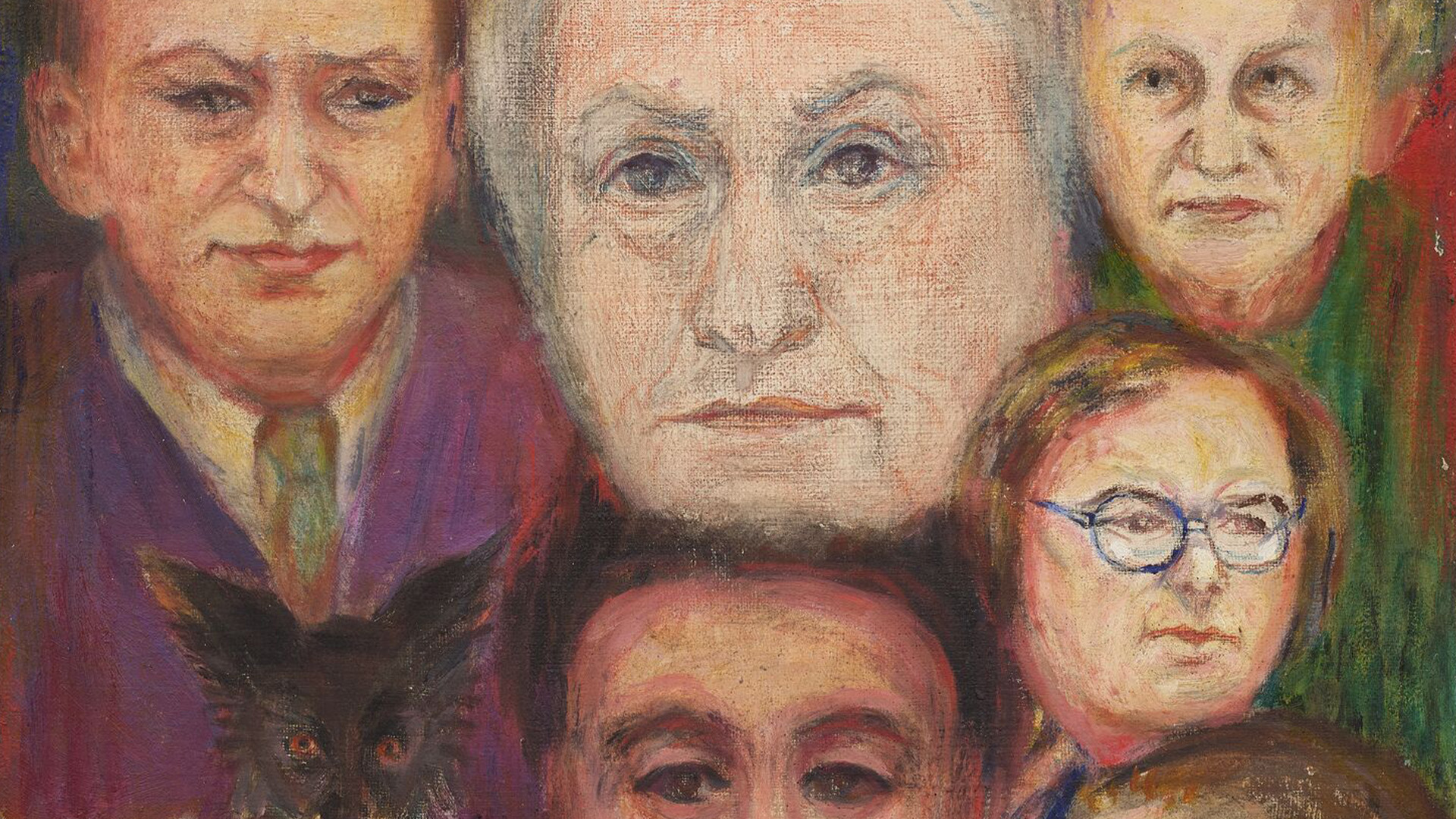
Erna Rosenstein

Born in 1913 in Lwów (now the Ukrainian city Lviv) and raised in Kraków, Erna Rosenstein emerged as part of the Polish avant-garde in the 1930s, associated with the Kraków Group. She studied at the Wiener Frauen Akademie in Vienna in 1932-1934 and then at the Academy of Fine Arts in Kraków between 1934-1937. She was part of a tight-knit circle whose artistic innovations were rooted in socially progressive left-leaning politics and who mobilized actions under the Communist Union of Polish Youth. As part of the Kraków Group, she identified with such fellow artists as Jonasz Stern, Jadwiga Maziarska, and especially, Tadeusz Kantor, whose underground experimental artistic and theater activities embraced Surrealism. In late 1937, prior to the outbreak of the Second World War, she spent several months in Paris where she saw the Exposition Internationale du Surréalisme (International Surrealist Exhibition) organized by André Breton and Paul Éluard. Passing through Germany on her way home to Poland, she also visited the Berlin edition of the Nazi Party’s notorious Degenerate Art Exhibition. These two shows made a profound impact upon Rosenstein’s early artistic ideas and undoubtedly influenced her storied career.
When war erupted and the Nazis invaded Poland in 1939, Rosenstein returned with her family to Lwów. They spent two years living in the Soviet occupied city, which provided less hostile conditions for Jewish families; there Rosenstein joined the Association of Artists. When Lwów was seized by the German army in 1941, the artist and her mother moved to the Jewish ghetto while her father went into hiding. The family acquired false identity papers in 1942, and escaped the ghetto to flee toward Warsaw. The horrifying events that followed would haunt the imagery and themes Rosenstein explored in her work for the ensuing five decades—in the process of the family’s sojourn, Rosenstein witnessed the brutal murder of her parents in a forest in the middle of the night. Wounded but able to escape, she survived the next three years of the war by living under false identities, changing the whereabouts of her lodging in Warsaw, and ultimately hiding in the small rural town of Częstochowa until the war’s end. While Rosenstein produced artworks in the prewar period, nothing survived the war. She resumed painting in 1945, and, in the years that followed, joined the Polish Workers’ Party, became a member of the Association of Polish Artists and Designers (ZPAP) and the Young Artists Group, and exhibited her work in the National Modern Art Exhibition in Kraków (1948 – 1949). In 1947 and 1948, she traveled to Switzerland, England and Paris, where she saw a series of Surrealist exhibitions. While in Paris, she met her future husband, the literary critic and translator Artur Sandauer, with whom she eventually settled in Warsaw. Together they had a son, Adam Sandauer.
During the Socialist Realist period, between 1949 and 1955, Rosenstein withdrew from official artistic life; defying the communist-imposed artistic doctrine, she worked outside the mainstream art world. In 1955, she became one of the nine artists who reactivated the Kraków Group, staging the first modern art exhibition of the post-Stalin ‘thaw’ era. Her first solo exhibition was held in Warsaw in 1958 at the Kzywe Koło Gallery of Modern Art, run at the time by Marian Bogusz, a fellow artist and apostle of modernity. She came into prominence with a 1967 monographic exhibition at the Zachęta in Warsaw, a presentation designed by Tadeusz Kantor and inspired by the design of Surrealist exhibitions. She then participated in numerous national and international exhibitions such as the Golden Grape Symposiums in Zielona Góra and took part in Kantor’s happenings ‘Cricotage’ (1965) and ‘Panoramic Sea Happening’ (1967). In 1976, she was awarded the prestigious Cyprian Kamil Norwid Art Critics Award, and in 1996, the Jan Cybis Prize, Poland’s most respected artistic distinction.
Erna Rosenstein was an author of paintings, assemblages, drawings, objects, and artist books. She published seven volumes of poetry, among others Ślad (Trace) in 1972 and Spoza granic mowy (From Beyond the Edges of Speech) in 1976. She died on November 10, 2004 in Warsaw. Her works are in the collections of majors Polish and international collections such as the National Museums in Warsaw, Wrocław and Kraków as well as the Muzeum Sztuji in Łódź. Recent international presentations of Rosenstein’s works include Unorthodox at The Jewish Museum in New York (2016), documenta 14 in Athens and Kassel (2017), and the travelling exhibition Surrealism Beyond Borders at The Metropolitan Museum of Art in New York and Tate Modern in London (2021-2022).
Biography
Selected Solo Exhibitions
Selected Group Exhibitions
Awards
Bibliography
Monographs
Artist's Books & Writings
Publications
Press
Exhibitions
1 / 2
Events
1 / 2
News
1 / 3
Ursula
1 / 2



























